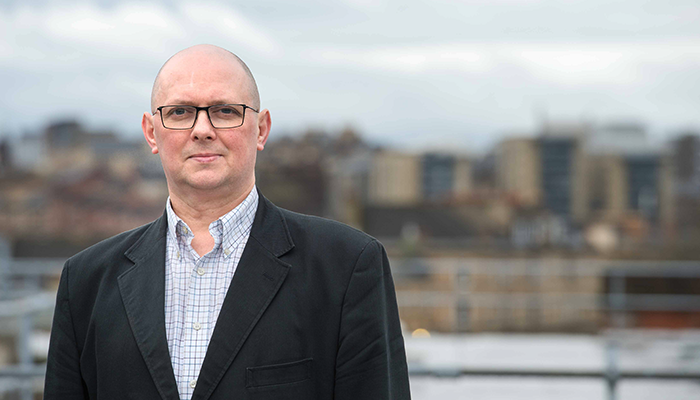Ken Gibb: Eight years in Bridgeton

Professor Ken Gibb
Last week, the UK Collaborative Centre for Housing Evidence (CaCHE) moved office from the Olympia Building in Bridgeton to the University campus in the West End of Glasgow. Director Ken Gibb reflects on the organisation’s time there.
The week just past, CaCHE moved office, leaving Bridgeton in Glasgow’s east end and returning to the main campus and our Divisional home in Urban Studies and Social Policy.
We shared the top floor of a large open plan space with the Glasgow Centre for Population Health and, initially with several other social sciences University teams. Like many spaces, I suspect the viability of a fully utilised office space like the top floor of the Olympia building and the complementary benefits and spillovers that it can produce, evaporated post-COVID and the effects of working from home. It was never really the same afterwards.
I will always have great memories of working there, spending time with CaCHE colleagues, and the many things we did and attempted as a new research centre.
The office had a large flexible meeting space, where we hosted government consultations on Housing to 2040, held seminars, worked with the Scottish Land Commission and other guests such as the Centre for Homelessness Impact, ran many different knowledge exchange fora, external board meetings and even a two day citizen’s panel, among many other such activities.
One memorable project development meeting was the initial response to the Scottish Funding Council’s climate emergency that eventually led to our Niddrie Road retrofit evaluation. I did not know any of the people present and had no idea that this was going to land as a bid, let alone a project, nor that it would turn into four years of work and the development of great lasting relationships and an unforgettable piece of work.
I didn’t really know the neighbourhood geography of the area well, and like several of my colleagues spent a lot of time walking around it. Not just Bridgeton and environs but the Barras and Merchant City to the west of us, Glasgow Green and the Gorbals to the south and Parkhead and Dalmarnock to the east.
The area has visibly changed in our time there in no small part due to Clyde Gateway’s sustained regeneration efforts. They, along with my colleague Des McNulty, were critical to our moving out there in the first place and were our downstairs neighbours in the building.
The building was always an interesting milieu with Scottish Boxing on the first floor and the public library on the ground floor. I never really got my head around the internal alarms and set them off more than once over the years, once on a Saturday, which required police support to fix, and all the while, me trying to not let them know that I was the supposed academic lead on the top floor of the building.
The building and its off-campus location helped us as a team in the initial years, even though the transaction costs of getting to campus were non-trivial and a challenge for colleagues. But that was the point really; we had space to build our operation and not be distracted by the day-to-day.
That chapter is now over, though we retain many Olympia friendships and experiences with colleagues, particularly those from GCPH. Now we are the new team in 25 Bute Gardens, and that novelty and attendant new working arrangements will be a further transition, but also an opportunity to forge new working and social relations (myself included).
Our new postal address is
UK Collaborative Centre for Housing Evidence
Room 106
Urban Studies & Social Policy Division
School of Social & Political Science
University of Glasgow
25 Bute Gardens
Glasgow G12 8RS
This article was originally published on the CaCHE website.








